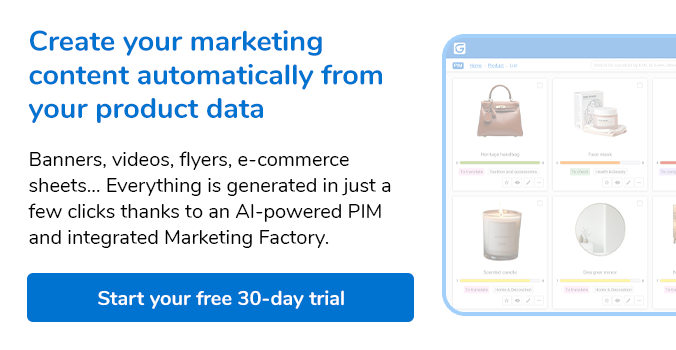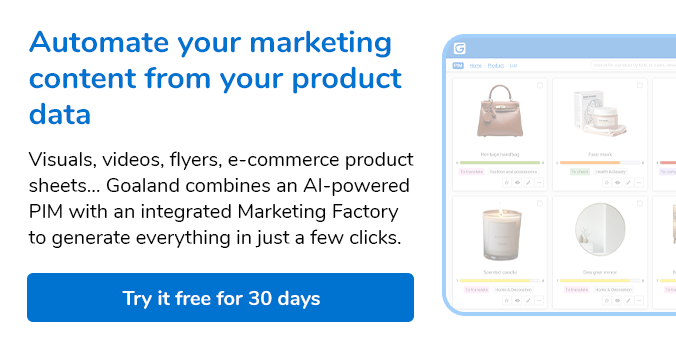Competition in the retail sector has been intense over the last three years! 90% of businesses1 agree with this and 48%1 consider that competition is « much tougher » than before. To remain competitive businesses are having to provide a unique offer, to constantly launch new products or services and to adapt quickly to market changes.
To achieve this, it is essential to use comparative analysis: 90% of businesses in the Fortune 500 list2 are using comparative analysis to give them a competitive advantage and 62%3 are planning to invest more on this area.
However, there are many challenges involved in implementing comparative analysis: gathering data (52%4), choosing the most relevant information (46%4), centralizing and organizing this information (39%4)…
Discover the definition of comparative analysis, the key benefits and the difficulties involved in its implementation.
#Comparative analysis: Definition
Contrary to competitive intelligence, comparative analysis involves implementing processes for analyzing the activity of your competitors (product offer, communication strategy, new products/services...), gathering data from their websites and comparing it with your own information.This analysis involves following several steps: identifying competitors, retrieving data, comparing the information, organizing it, centralizing it and sharing it with the relevant company departments.

Comparative analysis is a major challenge for businesses: 61% of them4 see it as « important4 » and 16%4 as « absolutely essential4 ». This analysis process allows them to understand the position of their competitors on the market and to adjust their own strategy to remain competitive: rates, launch of new range, innovations…
#The benefits of comparative analysis
Comparative analysis provides numerous benefits, both in quality and quantity5 not least of which are growth and increased revenue.
Businesses allocating a lot of time and money to comparative analysis achieve more growth. By comparing all this information, businesses can improve their position on the market and identify opportunities for growth: developments, latest innovations, trends... This gives them the wherewithal to schedule actions and to thwart the competition (price change, launch of a new product, change in stock levels…) and develop their competitive advantage: 90% of them5 say that comparative analysis contributes to their organization's success. 52% of companies5 say that their revenues have increased through using comparative analysis.
#The difficulties of comparative analysis
#Analyzing the eCommerce sites of your competitors
To remain competitive, businesses have to take an interest in the eCommerce sites of their competitors: this is the main source of information6 in any comparative analysis process. For each eCommerce site being analyzed, you need to be informed about any changes and/or updates in their product information: price, product offer, available stocks… and to compare this with your own information.
When the brand has a vast product catalog, this watch process can quickly become time consuming. It requires that businesses connect regularly to competitor eCommerce sites and search each web page for strategic information. This search is the most time-consuming comparative analysis activity (43%7).
#Multiplication of information sources
To stay ahead of the competition, 89% of businesses5 state the importance of managing the product information on their own websites. They also need to control their product information on all the distribution channels on which their products are marketed: multiple Marketplaces, distributors, sales networks, social selling… On average, 71% of businesses8 are monitoring at least three different information sources.
As there are many different distribution channels to monitor, this task can be extremely time consuming. On each selling channel, a business must compare their prices with those of their distributors, monitor stock levels and systematically examine the quality of product data: reliability, completeness, precision, adaptation to each selling channel, translation…
#Sharing comparative analysis findings
It is essential to share the results of comparative analysis with the relevant teams9: Product, Marketing, Sales, SEO… Sharing this info provides them with a global view of the company and encourages teamwork. Businesses making regular efforts on comparative analysis are 155% more likely10 to generate increased revenue than other companies.

However, sharing this information is one of the main obstacles11 facing businesses in the implementation of comparative analysis. Far too often, the different departments in a company receive information that is not adapted to their needs: 50% of them11 do not use this information.
#Boost your efficiency with a comparative analysis solution
For a business, implementing a productive comparative analysis process is seriously challenging. In the absence of a dedicated comparative analysis solution, only 12% of the data3 gathered is analyzed.
A PIM solution equipped with a Smart Comparison and Analysis module allows you to automate the entire competitive analysis process: gather strategic information, analyze, compare and summarize information… and greatly increases efficiency. Businesses using comparative analysis solutions find the information they need 4 times faster3, generate 4 times more revenue3 and make strategic decisions 5 times faster3.
To sum up, comparative analysis gives you a serious competitive advantage on the market. This does not mean that its implementation is problem free: gathering data, centralizing, and organizing information, compare this information, identify differences and share all information with the relevant departments… The solution to these problems is to use a PIM (Product Information Management) solution equipped with a Smart Comparison and Analysis module to save a lot of time and to simplify and optimize your competitive analysis process.
1
2020 State of Competitive Intelligence.crayon.co.
2
Newson, J. N. (2020, July 31). 10 Competitive Intelligence Statistics : Do Your Competitors Know These? jimmynewson.com.
3
Hover, Z. H. Competitive Intelligence : 19 Statistics That Will Blow Your Mind. evalueserve.com.
4
Crayon. 2022 state of competitive intelligence. www.crayon.co.
5
Mishra, A. M. (2021, May 16). A Guide to Competitive Intelligence. fireflies.ai.
6
Guta, M. G. (2020, January 14). 94% of Businesses Investing in Competitive Intelligence, How About You? smallbiztrends.com.
7
Dumas, E. D. (2020, January 31). How to Share Competitive Intelligence Across Your Organization. www.crayon.co.
8
Contify. 2021 Contify's Benchmark Report for B2B Marketers. contify.com.
9
Bond, C. B. (2021, December 29). Who Uses Competitive Intelligence ? A Quick Tour of the 4 Major Stakeholder Audiences.
10
Mirman, E. M. (2019, February 15). Top 5 Competitive Intelligence Challenges from Industry Professionals. www.crayon.co.
11
Ranjan, P. R. (2022, July 21). 3 Common Market & Competitive Intelligence Problems and Their Solutions. contify.com.







